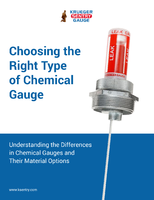Fabric HVAC Duct targets small ventilation projects.
Press Release Summary:
Constructed of polyester woven fabric, M/FA Modular/Field Adjustable Fabric Duct is not breathable and has non-linear diffusers that replicate registers. System is made up of 15, 5, and 1.5 ft lengths that can be combined to accommodate most any run 6,000 cfm and smaller. Available in 12, 16, 20, 24, and 28 in. duct diameters, system includes inlet collar, adjustable flow device for internal duct airflow throttling, 90° elbow, end cap, and adjustable air outlet.
Original Press Release:
New Modular/Field-Adjustable HVAC Fabric Duct Saves 40-80% in Labor Vs. Metal for Small Ventilation Projects
The newest product innovation in the ventilation industry-the modular/field-adjustable (M/FA) fabric duct/diffuser system-promises air distribution installation time reductions of 40 to 80-percent and 15 to 50-percent less material costs, depending on marketplace geography. The result is a significantly larger profit margin potential or savings for the HVAC contractor or maintenance department and better bid price competitiveness for smaller projects. Besides price, M/FA fabric duct, which is constructed of a polyester woven fabric, is the simplest air distribution product on the market to design and install, and is available to a jobsite within 24 hours because it's stocked.
These features separate M/FA from conventional plan/spec fabric duct, which commands a sizeable share of air distribution in the open architectural ceiling project market today. Plan/spec fabric duct is custom-manufactured and designed for applications by consulting engineers in a process that typically takes weeks to complete. Applications are typically large projects such as gymnasiums, convention centers, big box retail, office buildings and other commercial buildings with open architecture ceilings.
Plan/spec fabric duct is decades old and is an integral part of many prestigious projects such as the David Lawrence Convention Center, Pittsburgh; the 13,300-square-foot Georgia Tech Aquatic Center, Atlanta; the $60 million, 110,000-square-foot Corona Park Pool & Ice Rink adjacent to Shea Stadium in Flushing Meadows, and also thousands of other applications in factories, warehouses, schools, and any other commercial building with an exposed architectural ceiling.
Plan/spec fabric duct has always been a clear alternative to metal duct because of its lower installation costs and inherent dispersion performance designs, such as linear vents and porous fabrics that distribute a gentle, draft-less airflow that's far superior to the antiquated technique of spiral metal duct and drafty registers every 10 feet.
M/FA fabric duct is more similar to metal duct in that it isn't a breathable fabric and it has non-linear diffusers that replicate registers. Therefore it's more practical with smaller open architecture ceiling projects such as a 5,000-square-foot strip center retail store, a commercial room addition, a new factory/warehouse that needs a straight heating/cooling duct run with some diffusion, with one or two elbows, or any other simple, straight-run ventilation project costing less than $2,500. Comparatively, plan/spec fabric duct isn't practical and metal is significantly costlier with small projects.
What is Modular/Field Adjustable Fabric Duct
M/FA promises to revolutionize how smaller ventilation projects are designed, bid and installed because of its cost-cutting measures.
This type of ductwork gives the contractor a significant edge over the competition that bids the same project with metal duct. A project of running a 100-foot-run of 18-inch-diameter metal duct costs an estimated $2,832 or more in materials and labor. Therefore, how much of an edge would a contractor have bidding the same project with modular fabric ductwork, field-adjustable diffusers and charging $1,550 while still making a healthier margin than the contractors bidding metal. Other manufacturers have tried this market and some have developed a similar modular type of fabric duct product in a variety of sizes.
Typically a system is made up of 15-foot, 5-foot and 1.5-foot lengths that can be combined to accommodate most any run 6,000-cfm and smaller. Diameters range from 12, 16, 20, 24 and 28-inch diameters. Components include an inlet collar for connecting to a metal plenum or duct, an adjustable flow device for internal duct airflow throttling, a 90-degree elbow, an end cap and the adjustable air outlet (AAO), which is an alternative to a metal register/damper. While an elbow is available for horizontal transitions and circumventing obstacles, runs utilizing multiple elbows three or more aren't recommended. Systems are suspended with a cable kit, 100-feet of cable, two eyebolts, two turnbuckles, two thimbles and four cable clamps.
All types of fabric duct pose advantages over metal duct such as cost, light weight, and ease-of-installation. With M/FA, the two-foot-long AAO is superior to the conventional metal register. Metal registers can be throttled, but generally are inflexible as to direction and placement frequencies in the run. An AAO has four orifices (two per side) in small, medium and large diameters. The orifices that can be throttled, blocked or fully opened in many combinations of one, two, three or all four orifices. One AAO can provide anywhere from 0-cfm to 920-cfm for a 28-inch-diameter system. Air direction can be 10 and 2-o'clock or positioned at 4 and 8 o'clock by reversing the AAO via its dual start zippers.
Designing a system doesn't require consulting engineers and is simple when using basic metal duct ventilation principles. Designs begin with the duct run's cfms and the amount of AAO positions required. Once these two factors are determined, then air throw distance, direction and other variables are determined. Because the systems are so flexible and reconfigurable, any miscalculation along the way can typically be immediately remedied. Some manufacturers have design tools such as slide charts, online calculators and customer support for design and installation assistance.
Aftermarket flexibility also is strong. A system can be reconfigured just as easily as it was originally installed, making it a perfect candidate for factory production floor areas that are periodically changed. The M/FA fabric duct also is quickly unassembled, commercially laundered and reassembled, which is an advantage in IAQ sensitive environments.
Anatomy of a Retail Application
Using the hypothetical example of a 2,500-square-foot retail store in a small 10-store strip center, M/FA fabric duct can potentially save hundreds of dollars and significantly increase profit margins. A typical heating/cooling duct run for this application might be a 100-foot-long, 18-inch-diameter of spiral metal ductwork. According to Everything You Ever Wanted to Know About Sheet Metal Estimating, But Were Afraid to Ask by Herbert C. Wendes, P.E., a Chicago-based member of the mechanical contracting industry, running 100 feet run of 18-inch-diameter low pressure spiral duct down the middle of the store requires 1.4 man hours per 10 feet of duct for a total of 14 hours, which doesn't include travel time and the fact all the supplies are ready at jobsite. Since 10 registers are required at ½-hour/register, another five hours are added for a total of 19 installation hours. At a market average of $80/hr (which includes salary, company overhead, cost of doing business, profit margins and other miscellaneous expenses), labor to install the duct is 19 hours x $80= $1,528. Material costs are 10 lengths at $50/10-foot length = $500; 10 couplings at $15/coupling = $150; 20 registers (to throw air from the both sides of the duct) at $20/register = $400; 20 boots for the registers at $12/boot at $240; and one end cap at $10. The total for materials is $1,300. The grand total for labor ($1,528) and materials ($1,300) is a grand total of $2,828 for the project.
Running the length M/FA fabric duct would carry a significantly lower price. The industry doesn't make an 18-inch-diameter model, so a 16-inch diameter would be sufficient after paying close attention to adjusting the orifices for more cfms. Labor is estimated at 4 hours for one installer x $80/hr for a total of $320 or $1,208 less than the aforementioned metal estimate.
The M/FA fabric duct design consists of 9 AAO's at 2-feet-long each for a total of 18 feet. The remaining 82 feet consists of sixteen 5-foot-long lengths (80 feet) one air inlet (1 foot) one end cap (.5 foot) and one 1.5-foot length (1.5feet). The cost for these materials is $956.44 including the cable assembly kit. The grand total for the project is $1276.44.
Anatomy of an Industrial Application
One of the first users of M/FA fabric duct is the sheet metal shop of mechanical contractor, State Automatic Heating & Cooling, Batavia, IL. Originally, the company had installed a gas-fired furnace without ductwork. Although inefficient, it was a quick-fix for wintertime sheet metal worker warmth in the 1,000-square-foot sheet metal fabrication area that is part of its offices and warehouse. Eventually the company decided to install duct above the area for more even heating and improved indoor employee air comfort. When President, James Gates priced the project at 16 man hours (two men) or a total of $1,600 (billable labor rate) to hang and install 54 feet of ductwork and eight registers. On the other hand, it took only three hours for one man to hang the M/FA fabric ductwork at a total labor cost of $300 or a total savings of $1,300. It didn't take long for Gates to choose fabric over metal.
Fabric and metal material costs were a toss-up even though State Automatic had its own sheet metal shop.
Shipping was $8 and total materials cost was $675, which included:
o Three 15-foot and one 1.5-foot lengths of 20-inch-diameter SimpleSox duct;
o One inlet collar and endcap;
o Four AAO's;
o One hanging kit consisting of 100-feet of cable, U-bolts and turnbuckles;
An additional advantage is reconfiguration flexibility. Since State Automatic has a history of reconfiguring the shop's metal fabricating machinery layout every few years to accommodate company growth and evolving customer base needs. The next reconfiguration may simply necessitate switching out several AAO's or adjusting the orifice throws or direction, rather than a major overhaul of the entire duct run.
The Future of the Small Ventilation Project
Whether this new and innovative type of heating and cooling delivery system takes a significant portion of the small project ventilation market is really dependent on contractors with the ability to "think outside the box." Typically new products make a market penetration due to economic conditions. Odds are that market share will continually grow when contractors discover missed opportunities of high profit margins in an age of shrinking profit margins. Reluctant contractors will become believers once metal duct bids are lost because they were significantly higher than competing contractors' bidding a M/FA duct system.




